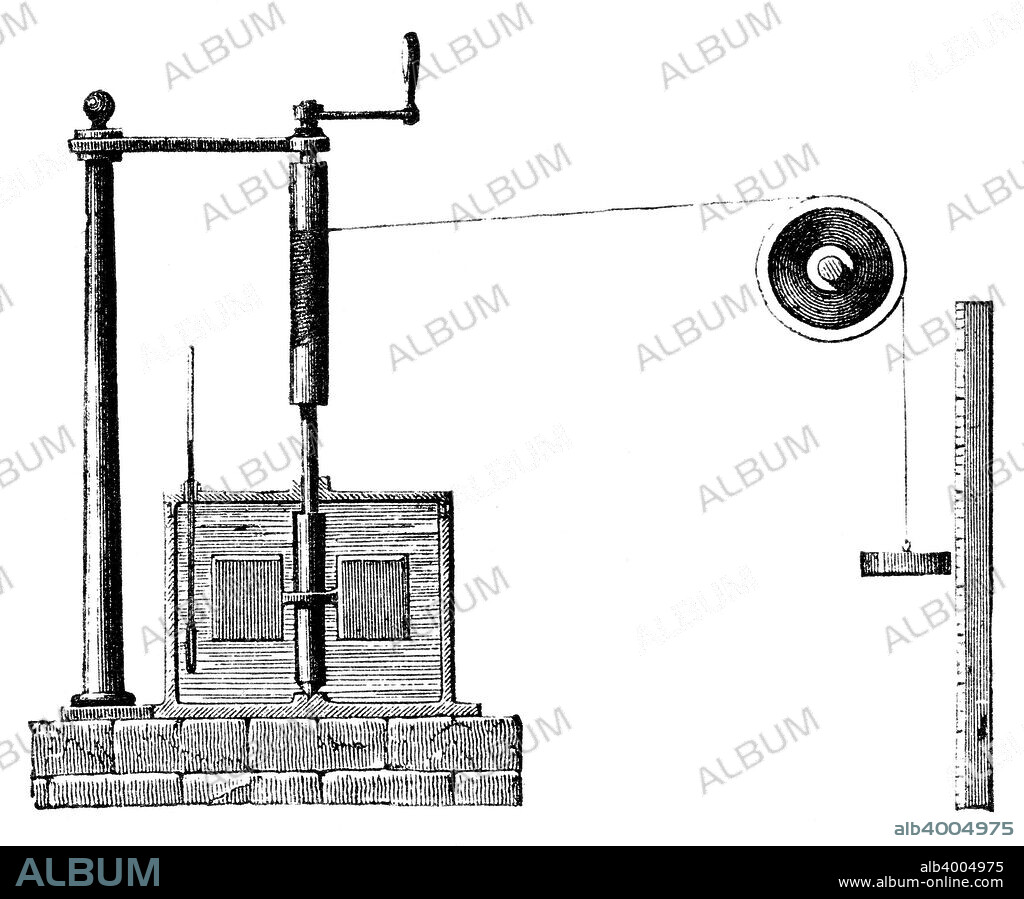alb4004975
Joule's apparatus for determining the mechanical equivalent of heat, 1872. Artist: Unknown

|
Añadir a otro lightbox |
|
Añadir a otro lightbox |



¿Ya tienes cuenta? Iniciar sesión
¿No tienes cuenta? Regístrate
Compra esta imagen.
Selecciona el uso:

Título:
Joule's apparatus for determining the mechanical equivalent of heat, 1872. Artist: Unknown
Descripción:
Ver traducción automática
Joule's apparatus for determining the mechanical equivalent of heat, 1872. A vessel of water, oil or mercury encloses vanes attached to a spindle. Cord is wound round the cylinder and drum. The weight descending against the scale rotates the spindle and vanes. Raising and lowering the weight raises the temperature of the fluid. From the rise in temperature and the distance travelled, the energy used can be calculated. British physicist James Prescott Joule (1818-1889) determined the mechanical equivalent of heat. The unit of energy called the joule is named after him.
Crédito:
Album / Oxford Science Archive / Heritage Images
Autorizaciones:
Modelo: No - Propiedad: No
¿Preguntas relacionadas con los derechos?
¿Preguntas relacionadas con los derechos?
Tamaño imagen:
3573 x 2953 px | 30.2 MB
Tamaño impresión:
30.3 x 25.0 cm | 11.9 x 9.8 in (300 dpi)
Palabras clave:
BLANCO Y NEGRO • CALOR • CIENCIA • CONCEPTO • ENERGIA • EXPERIMENTO • FÍSICA (CIENCIA) • GRABADO • JAMES • MONOCHROME • MONOCROMO • SIGLO XIX • SIGLO • TEMPERATURA
 Pinterest
Pinterest Twitter
Twitter Facebook
Facebook Copiar enlace
Copiar enlace Email
Email
